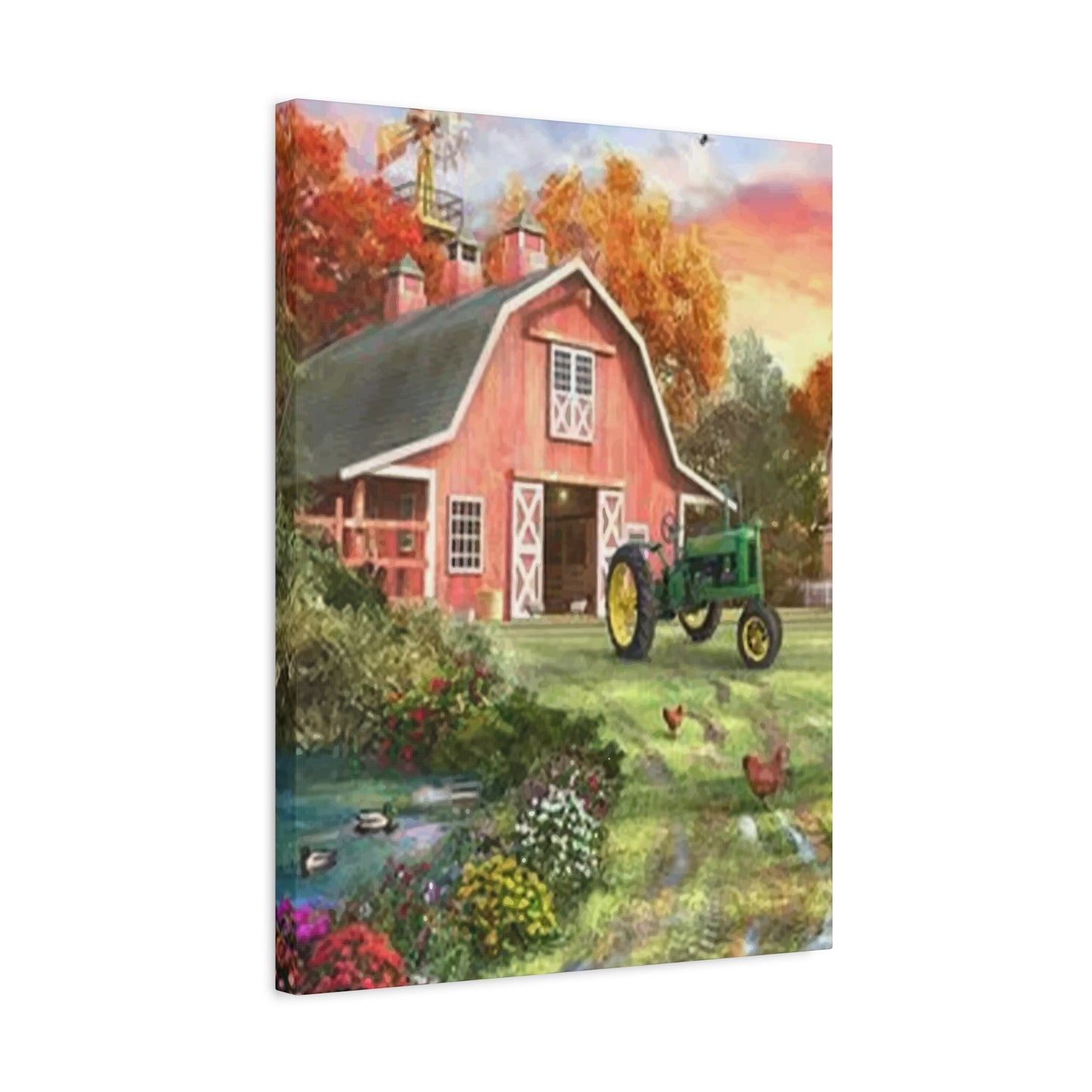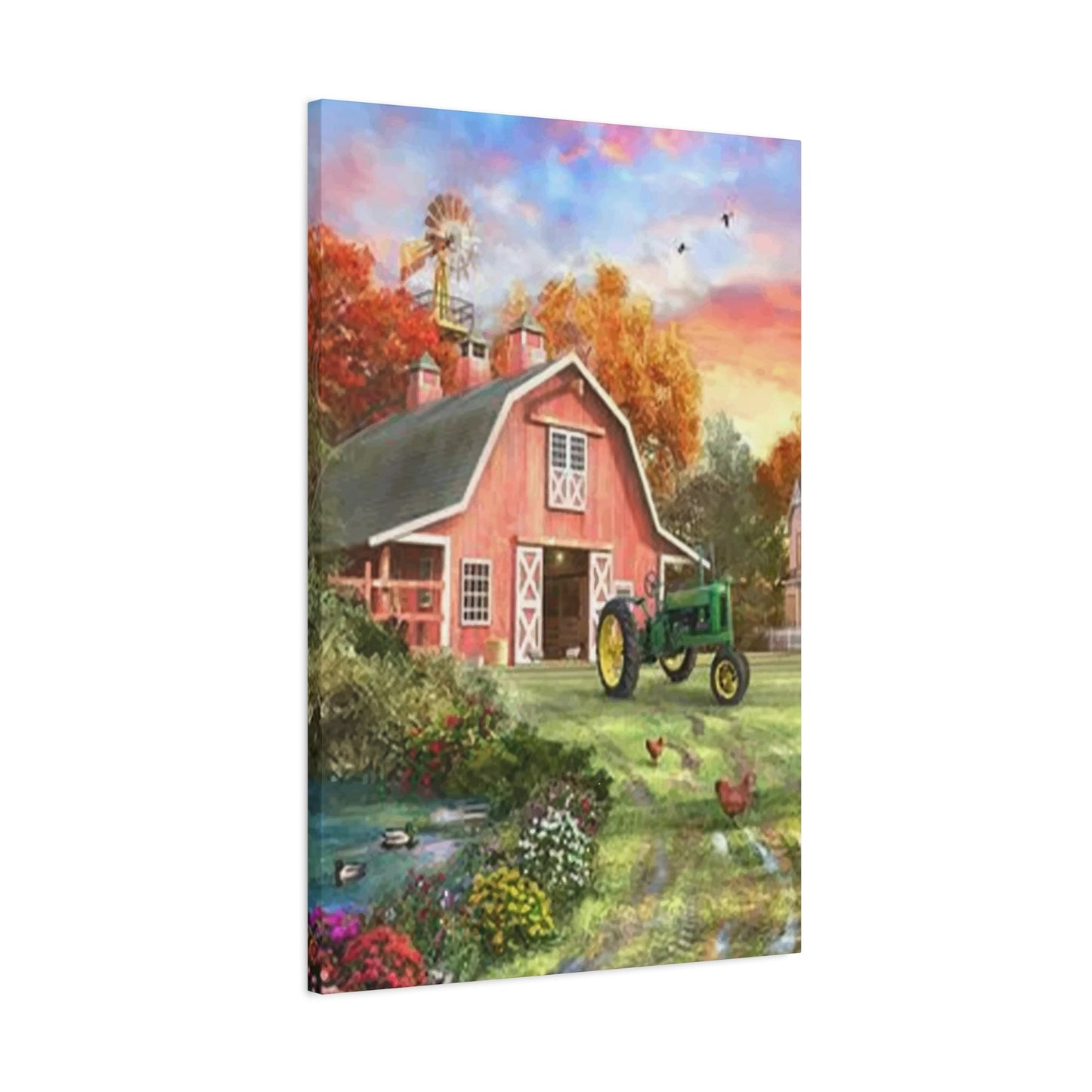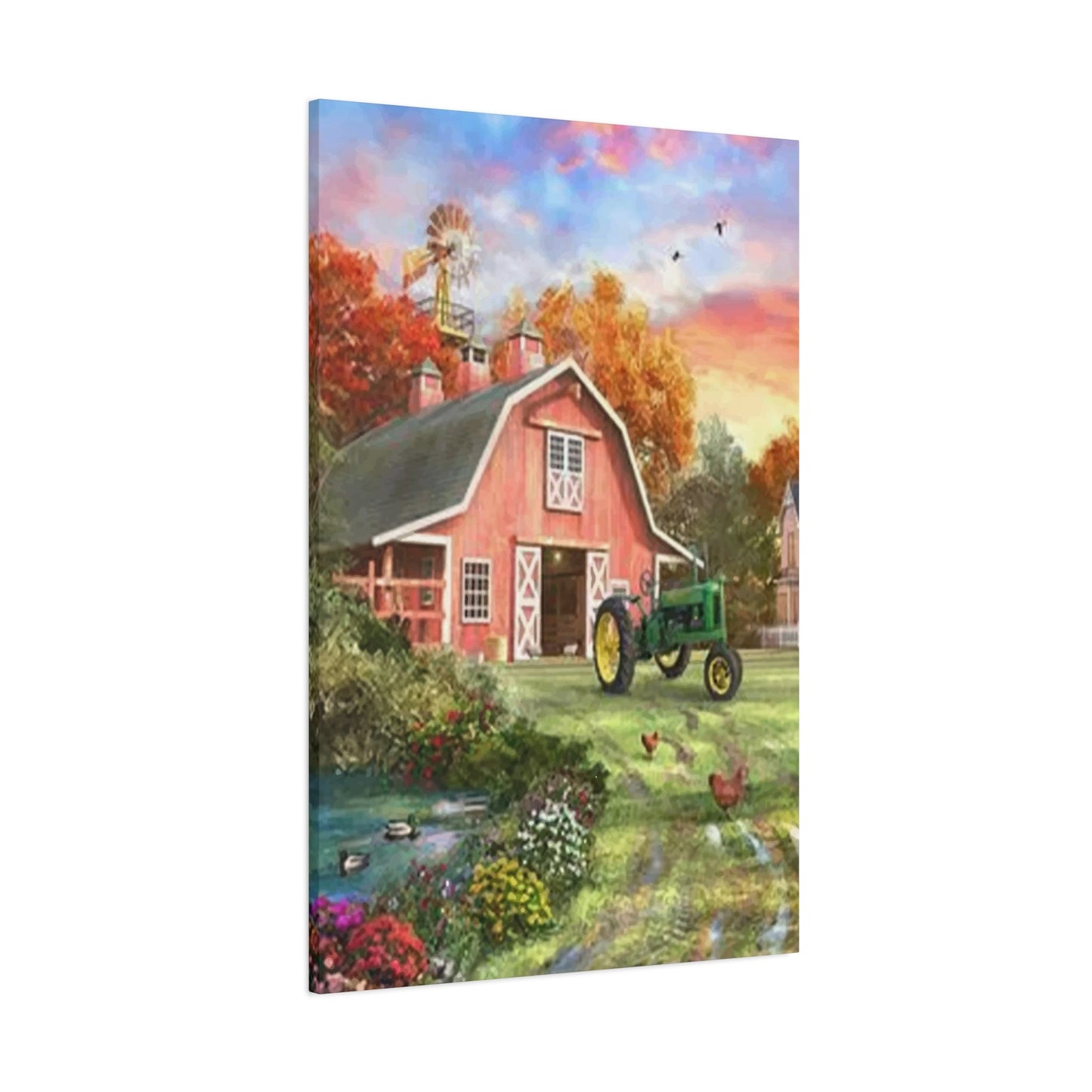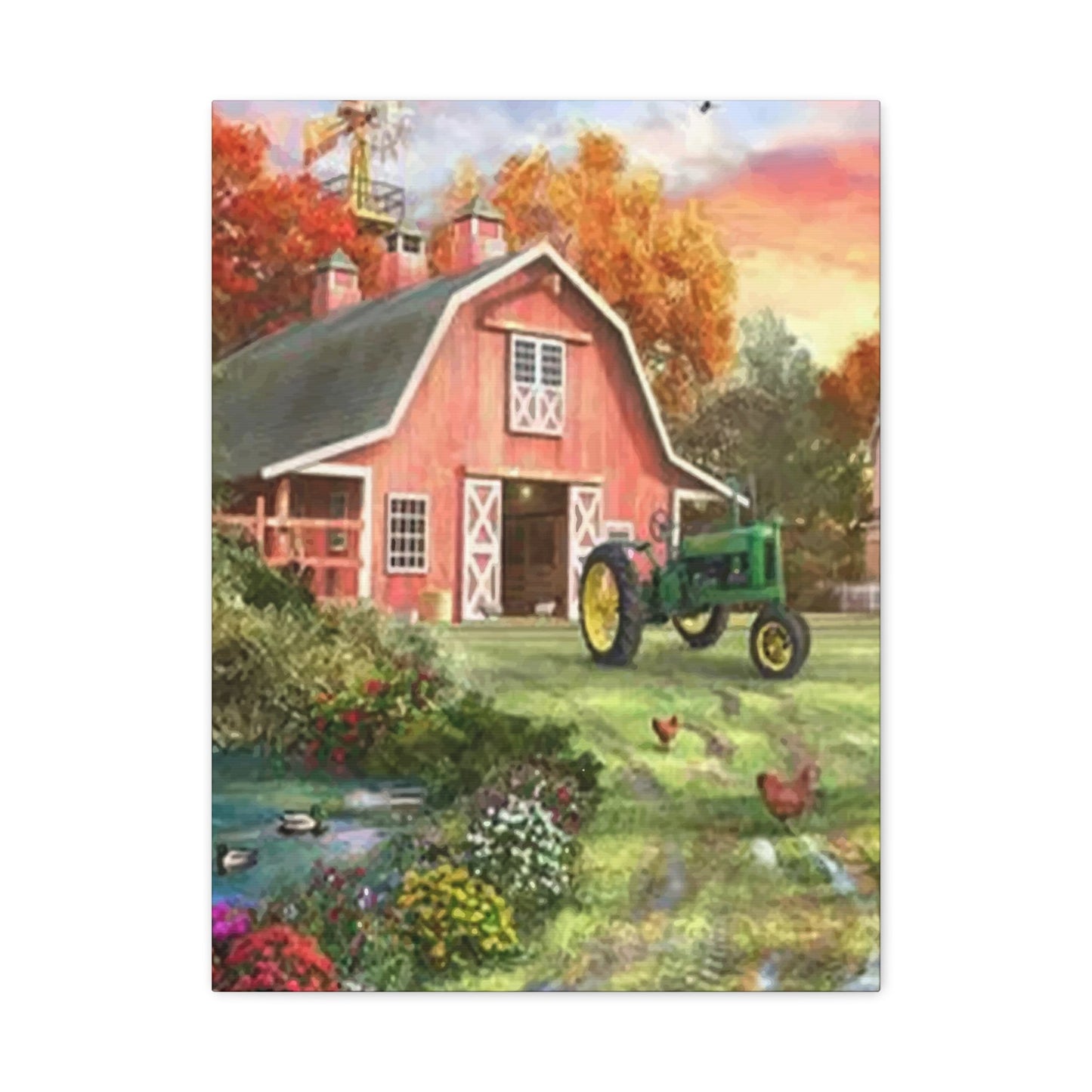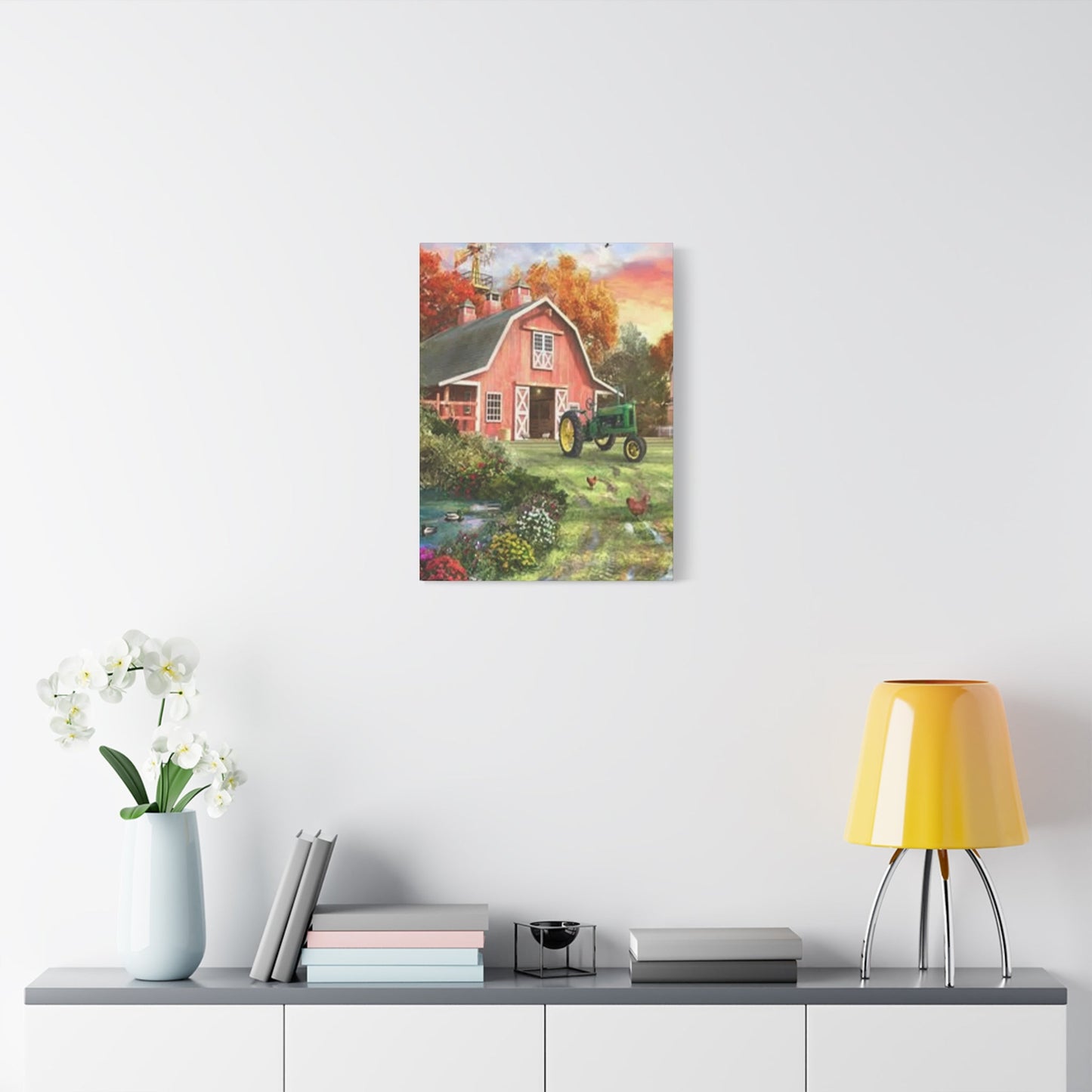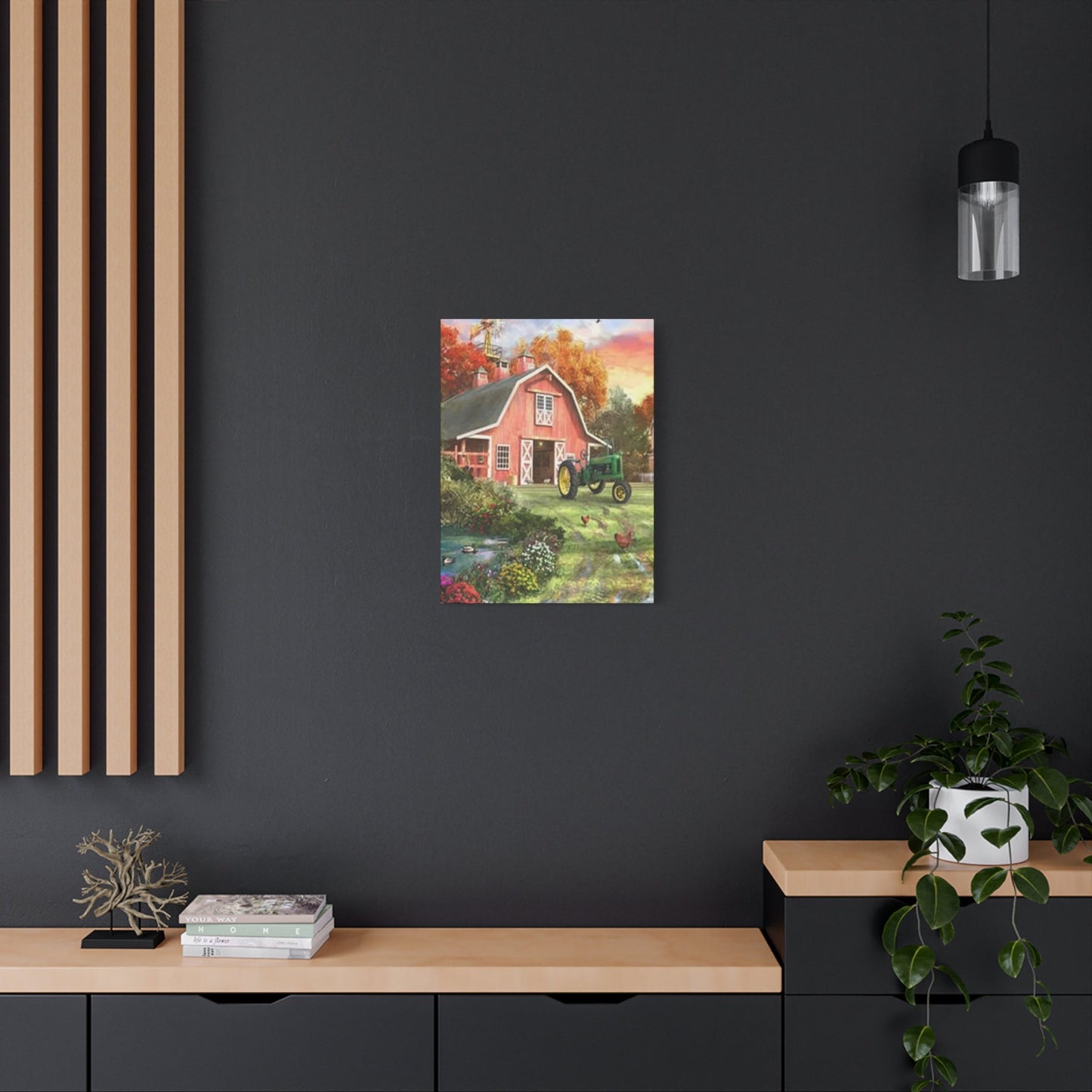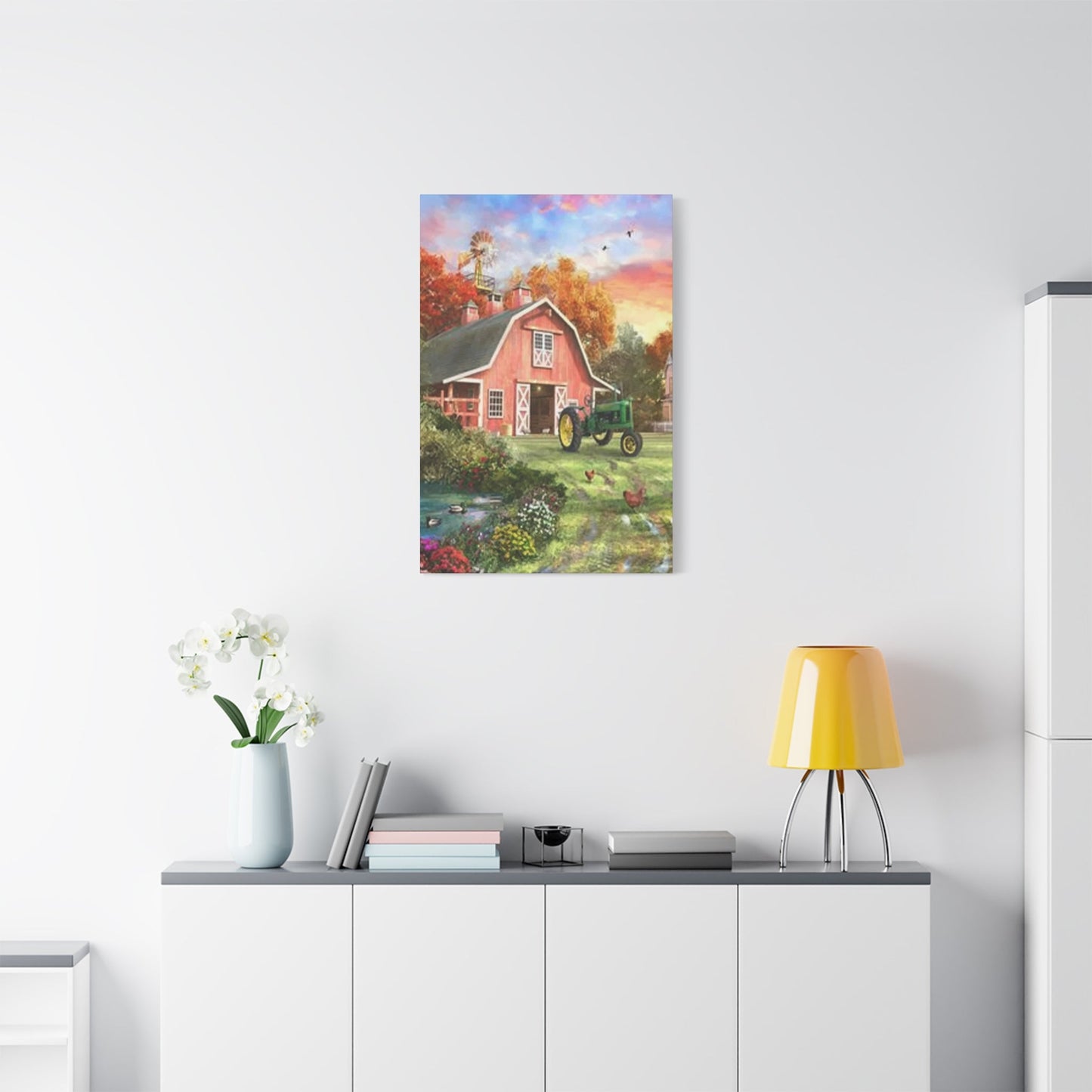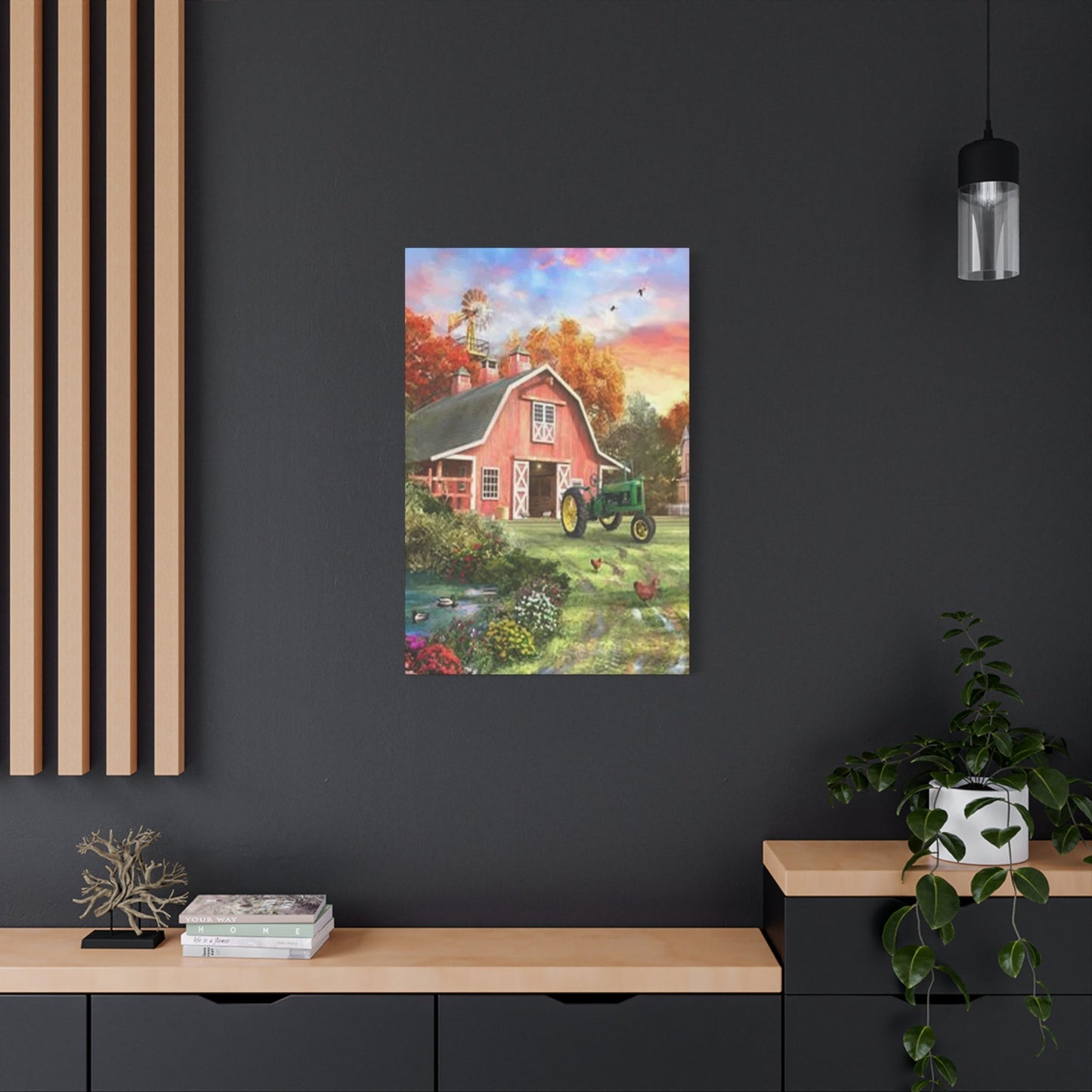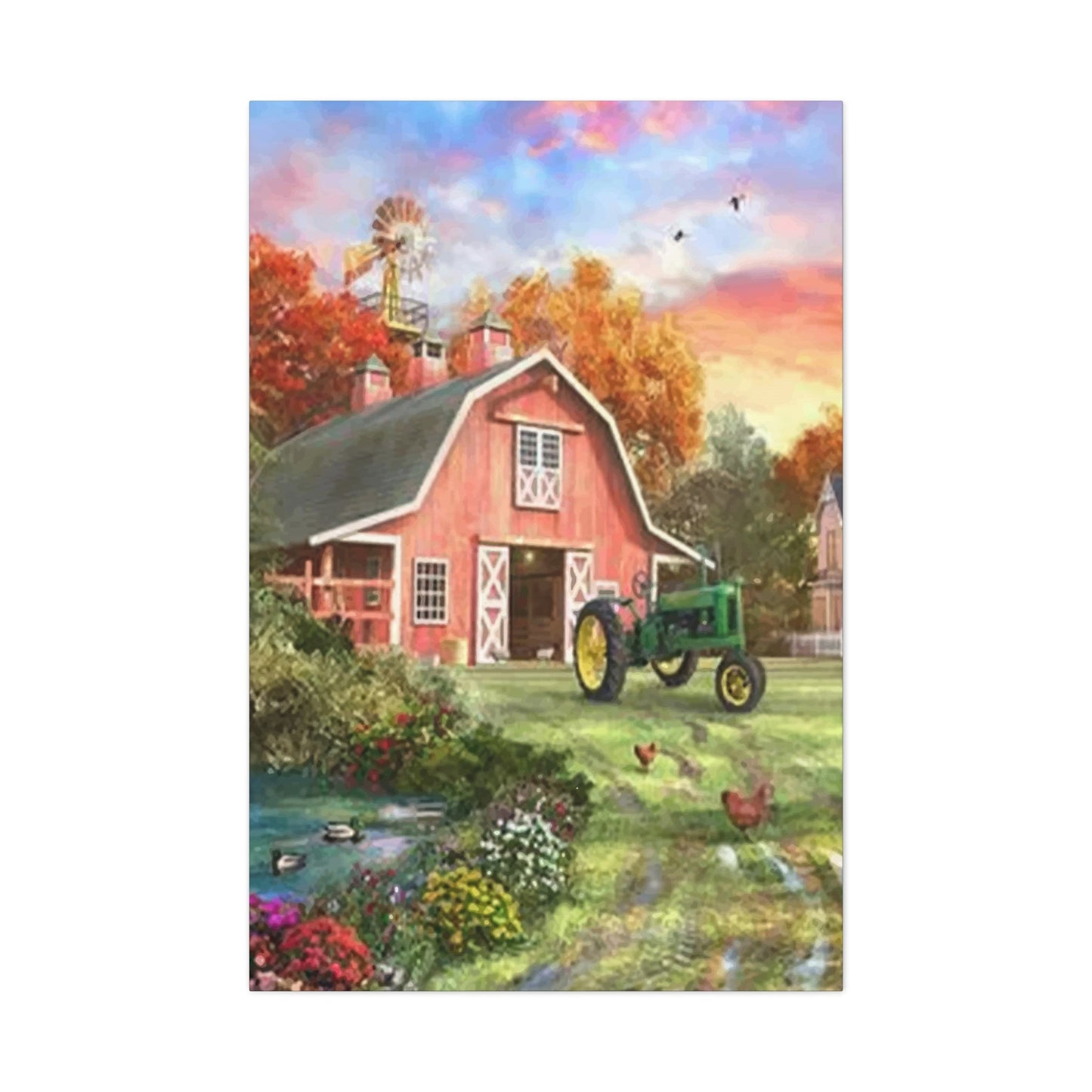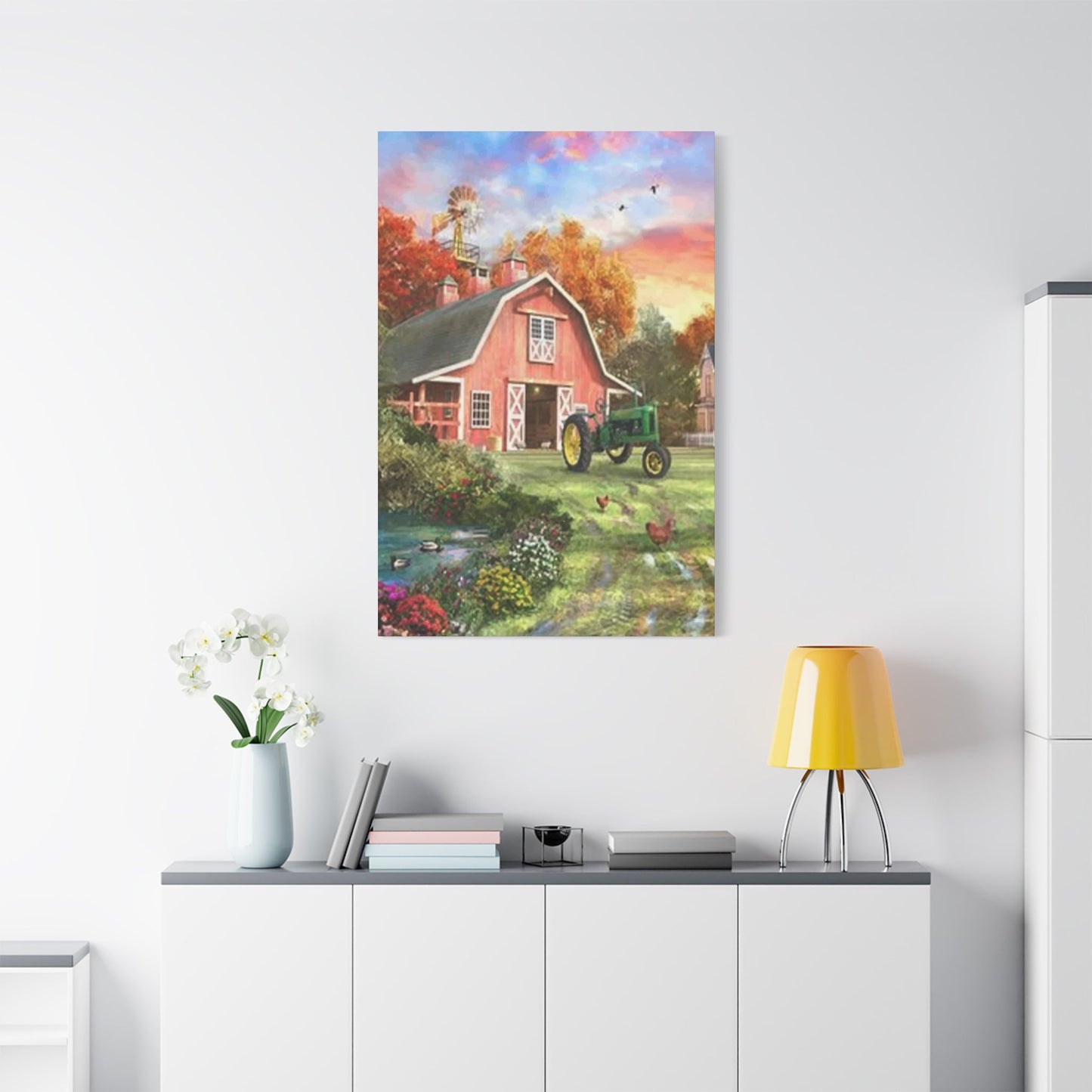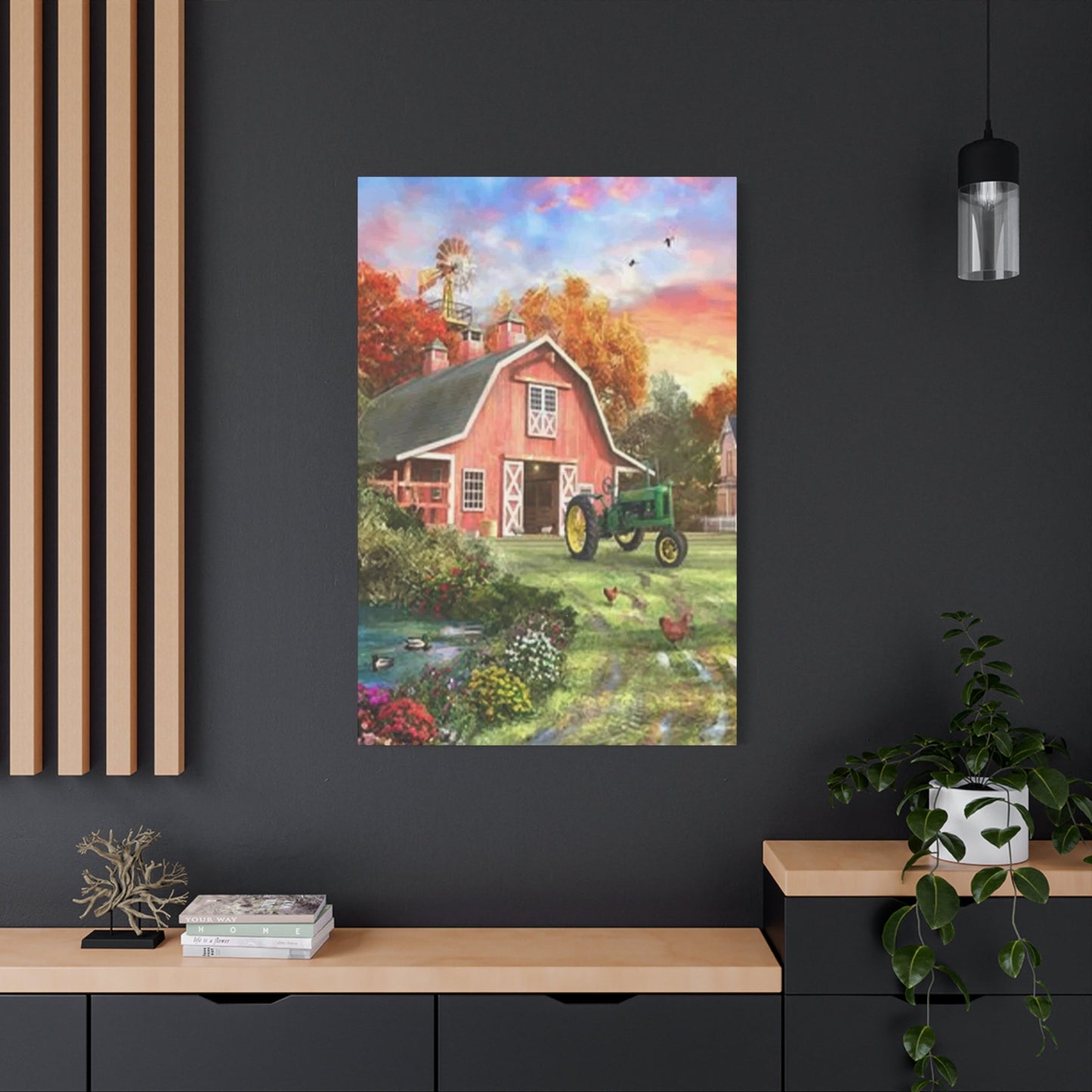Rustic Beauty at Home: Barn House Living and Architectural Wall Art Ideas
Barn-style residences have captured the imagination of homeowners seeking to blend rustic charm with contemporary comfort. These magnificent structures, originally designed for agricultural purposes, have evolved into stunning residential properties that offer a unique living experience. The appeal of barn houses lies in their ability to provide expansive living areas while maintaining a connection to rural heritage and simpler times.
The architectural beauty of barn houses stems from their practical origins. These structures were built to last, featuring robust timber frames, soaring ceilings, and efficient use of available materials. Today's homeowners are drawn to these characteristics, finding in barn houses a perfect canvas for creating homes that are both functional and aesthetically pleasing. The large, open layouts provide endless possibilities for customization, while the inherent rustic elements offer a warmth and authenticity that is often missing in conventional modern construction.
Wall art plays a crucial role in barn house living, as the expansive surfaces and high ceilings provide ideal backdrops for artistic expression. The rustic nature of these homes calls for artwork that complements their architectural features while adding personality and visual interest. Whether through traditional paintings, contemporary sculptures, or handcrafted pieces, wall art helps bridge the gap between the home's agricultural past and its residential present.
Transforming Agricultural Structures into Comfortable Living Environments
Converting agricultural barns into comfortable residential environments requires careful planning and creative vision. The process begins with assessing the structural integrity of the existing building, ensuring that the foundation and framework can support the modifications necessary for modern living. Many barn conversion projects involve reinforcing existing beams, updating electrical and plumbing systems, and improving insulation to meet contemporary comfort standards.
The transformation process often reveals hidden architectural treasures within the original barn structure. Exposed beams, hand-hewn timber posts, and original hardware become focal points that define the character of the converted residence. These elements serve as natural mounting points and inspiration sources for wall art installations, creating opportunities for artistic displays that honor the building's heritage while serving modern aesthetic purposes.
Successful barn conversions balance preservation of original features with the integration of modern amenities. This might include installing contemporary heating and cooling systems while maintaining the visual appeal of original timber framing, or creating modern kitchen facilities that complement rather than compete with rustic architectural elements. Wall art plays an important role in this balance, helping to unify old and new elements through carefully chosen pieces that speak to both the building's history and its current function.
The conversion process also involves addressing practical considerations such as moisture control, ventilation, and natural light optimization. These functional improvements often create new opportunities for wall art display, as improved lighting conditions and climate control make it possible to showcase a wider variety of artistic pieces throughout the home.
Contemporary Architectural Concepts for Barn-Style Homes
Modern barn house design represents an exciting evolution in residential architecture, combining traditional barn aesthetics with contemporary living requirements. These designs often feature clean lines, large windows, and open floor plans while maintaining the distinctive silhouette and material palette that make barn houses so appealing. The result is a home that feels both timeless and thoroughly modern, providing an ideal setting for contemporary wall art displays.
Contemporary barn house designs frequently incorporate sustainable building practices and energy-efficient technologies. Solar panels can be integrated into traditional barn rooflines, while modern insulation techniques ensure comfort without compromising the structure's visual integrity. These sustainable features often become talking points that can be celebrated through environmental-themed wall art that reflects the homeowner's commitment to responsible living.
The use of mixed materials is another hallmark of modern barn house design. While traditional timber remains central to these structures, contemporary designs often incorporate steel, glass, and stone elements that create visual interest and functional benefits. These material combinations provide excellent opportunities for wall art that plays with similar contrasts, such as metal sculptures against timber backgrounds or glass installations that complement large windows.
Modern barn house designs also emphasize indoor-outdoor connectivity, often featuring large sliding doors, covered porches, and seamless transitions between interior and exterior living areas. This connection to outdoor environments influences wall art choices, with many homeowners selecting pieces that reflect natural themes or complement the surrounding landscape views visible through large windows.
Blending Traditional Barn Elements with Contemporary Features
The art of combining rustic barn elements with modern amenities requires a thoughtful approach that respects the integrity of both design philosophies. Successful integration often involves highlighting original features while introducing contemporary elements that enhance functionality without overwhelming the rustic character. This balance creates dynamic living environments where wall art can serve as a bridge between old and new aesthetic elements.
Traditional barn elements such as wide-plank flooring, exposed ceiling beams, and board-and-batten siding provide a strong foundation for contemporary additions. Modern features like sleek appliances, minimalist fixtures, and high-tech entertainment systems can be integrated in ways that complement rather than compete with rustic elements. Wall art selection becomes crucial in this process, with pieces chosen to harmonize disparate elements and create cohesive visual narratives throughout the home.
The contrast between rustic and contemporary elements often creates compelling focal points for wall art placement. A modern abstract painting might be perfectly framed by rough-hewn timber beams, while a collection of vintage farm tools could create an interesting juxtaposition with contemporary furniture. These contrasts celebrate both the building's agricultural heritage and its current residential function.
Successful blending also involves careful attention to color palettes and material finishes. Contemporary additions should complement the natural tones and textures of traditional barn materials, creating opportunities for wall art that picks up on these color relationships while adding visual interest and personality to the living environment.
Advantages of Choosing Barn House Living
Living in a barn house offers numerous advantages that extend beyond aesthetic appeal to encompass practical, environmental, and lifestyle benefits. The spacious layouts typical of barn house designs provide flexibility for various living arrangements and activities, making these homes particularly suitable for families, artists, or anyone who values generous living areas. The high ceilings and open floor plans create opportunities for dramatic wall art installations that would be impossible in conventional homes.
The durability of barn house construction is another significant advantage. These structures were built to withstand decades of agricultural use, often resulting in homes that are more robust than typical residential construction. This durability extends to wall art display capabilities, as solid timber frames and thick walls can support substantial artistic installations without concern for structural limitations.
Barn houses often come with substantial acreage, providing privacy and opportunities for outdoor activities that complement indoor living. This connection to land and nature influences wall art choices, with many barn house owners selecting pieces that reflect their appreciation for rural landscapes and agricultural heritage. The combination of indoor display areas and outdoor settings creates unique opportunities for artistic expression that spans interior and exterior environments.
The energy efficiency potential of properly renovated barn houses represents another significant advantage. The thermal mass of traditional construction materials, combined with modern insulation techniques, can result in homes that are surprisingly energy efficient. This efficiency allows for climate-controlled environments that are ideal for preserving and displaying valuable wall art collections.
Practical Renovation Strategies for Barn Conversions
Successful barn house renovation requires careful planning and execution to preserve desirable original features while creating comfortable modern living environments. The renovation process typically begins with structural assessment and stabilization, ensuring that the building can safely support the modifications required for residential use. This foundation work creates opportunities to integrate modern systems in ways that complement rather than compromise the structure's original character.
One key renovation strategy involves working with existing architectural features rather than against them. Original timber framing can be cleaned and restored to serve as dramatic architectural elements that provide natural frameworks for wall art displays. Similarly, original barn doors can be repurposed as sliding elements that divide living areas while maintaining the structure's agricultural character.
Modern amenities must be integrated thoughtfully to avoid disrupting the barn's visual integrity. This might involve concealing electrical conduits within timber frames, installing radiant heating systems beneath traditional wood floors, or creating discrete storage solutions that don't interfere with the building's open feel. These hidden improvements create better conditions for wall art display by providing consistent temperatures and lighting while maintaining the barn's rustic aesthetic.
The renovation process also provides opportunities to enhance natural lighting, which is crucial for both daily living and wall art appreciation. Strategic placement of windows, skylights, and glass doors can dramatically improve interior lighting conditions while maintaining the building's exterior character. These lighting improvements enable homeowners to display artwork effectively throughout the converted barn.
Creating Beautiful Interiors Within Barn Structures
Designing beautiful interiors within barn structures requires a keen understanding of how to work with the unique characteristics of these buildings. The generous proportions and rustic materials typical of barn construction provide a distinctive backdrop that calls for thoughtful furniture selection and artistic curation. Wall art becomes particularly important in these environments, helping to soften the sometimes overwhelming scale of barn interiors while adding color, texture, and personal expression.
The open floor plans common in barn houses offer flexibility in furniture arrangement and wall art placement that is rare in conventional homes. Large wall surfaces can accommodate substantial artistic installations, while the height of barn interiors allows for vertical arrangements that create dramatic visual impact. The key is selecting and arranging pieces that complement the scale of the environment without being overwhelmed by it.
Natural materials play a crucial role in barn house interiors, with wood being the dominant element in most conversions. Wall art selection should consider these material relationships, choosing pieces that either harmonize with natural wood tones or provide deliberate contrast to create visual interest. The texture of barn walls, whether smooth painted surfaces or rough timber, also influences art selection and installation methods.
Lighting design becomes critical in barn house interiors, as the combination of high ceilings and potentially limited natural light can create challenging display conditions for wall art. Strategic placement of both ambient and accent lighting ensures that artwork can be appreciated at all hours while contributing to the overall atmosphere of the living environment.
Incorporating Timber Elements in Barn House Architecture
Timber is the defining material in barn house architecture, providing both structural support and aesthetic character that distinguishes these homes from conventional residential construction. The use of reclaimed timber from original barn structures adds authenticity and environmental sustainability to renovation projects, while new timber elements can extend the material palette while maintaining visual continuity. The relationship between timber elements and wall art is particularly important, as wood provides natural framing and mounting opportunities while influencing color and style choices.
The variety of timber species and treatments available for barn house construction creates numerous possibilities for artistic integration. Rough-hewn beams provide rustic backdrops for folk art and traditional crafts, while smooth, finished timber surfaces complement contemporary artistic expressions. The natural grain and color variations in wood create ever-changing backgrounds for wall art that shift with lighting conditions and seasonal changes.
Reclaimed timber often carries historical significance that influences wall art selection. Beams from century-old barns bring stories of agricultural life that can be celebrated through period-appropriate artwork or interpreted through contemporary pieces that reference rural themes. This historical connection adds depth and meaning to artistic displays while honoring the building's original purpose.
Modern timber treatment techniques allow for creative combinations of traditional and contemporary aesthetics. Timber can be stained, painted, or treated to achieve various effects while maintaining its structural properties. These treatment options create opportunities for wall art that plays with similar material relationships, such as painted canvases on stained timber or metal sculptures against natural wood backgrounds.
Achieving Energy Efficiency in Barn House Conversions
Energy efficiency in barn house conversions requires balancing preservation of character with implementation of modern performance standards. Traditional barn construction often featured minimal insulation and single-pane windows, creating challenges for comfortable modern living. However, thoughtful renovation can achieve excellent energy performance while maintaining the visual appeal that makes barn houses so desirable. Improved energy efficiency also creates better conditions for wall art preservation and display.
Insulation strategies for barn houses must work with existing structural elements rather than concealing them entirely. Spray foam insulation can be applied to roof decks and wall cavities while leaving timber framing exposed, maintaining the rustic aesthetic while dramatically improving thermal performance. This approach creates comfortable interior conditions that are ideal for displaying temperature-sensitive wall art throughout the year.
Window replacement and addition represents another crucial element of energy efficiency improvement. Modern high-performance windows can be selected to complement the barn's architectural character while providing excellent thermal performance and UV protection for wall art. Large windows also improve natural lighting conditions, reducing the need for artificial illumination while creating better viewing conditions for artistic displays.
Heating and cooling system selection significantly impacts both energy efficiency and interior design options for wall art display. Radiant heating systems installed beneath floors provide comfortable, even heating without requiring visible equipment that might interfere with wall art installations. Similarly, discrete mini-split cooling systems can maintain comfortable conditions without creating visual disruptions or requiring extensive ductwork that might compromise the barn's open feel.
Locating Barn Houses in Today's Real Estate Market
Finding the perfect barn house requires understanding the various market segments where these unique properties appear. Original barn conversions, new barn-style construction, and barn houses on agricultural properties each offer different advantages and considerations. The search process involves identifying properties that meet both functional requirements and aesthetic preferences while considering factors such as location, condition, and potential for customization, including opportunities for wall art display and collection.
Regional preferences and availability vary significantly across different geographic areas. Rural regions with strong agricultural histories often offer more authentic barn conversion opportunities, while suburban areas may feature new construction that captures barn aesthetics in more convenient locations. Each type of market offers different advantages for those seeking homes that provide excellent settings for wall art display and rural living experiences.
Working with real estate professionals who understand barn house markets is essential for successful property acquisition. These specialists can identify properties with good conversion potential, assess structural integrity, and estimate renovation costs accurately. They also understand the unique financing considerations that may apply to barn conversions and can guide buyers through the process of acquiring these distinctive properties.
The evaluation process for potential barn house purchases should include assessment of display opportunities for wall art and collections. Factors such as natural lighting, wall surfaces, ceiling heights, and climate control potential all influence the suitability of a property for serious art collectors or those who simply appreciate having beautiful surroundings in their daily living environment.
Vintage Styling Approaches for Barn House Decor
Vintage styling in barn houses celebrates the agricultural heritage of these structures while creating comfortable, livable environments that honor their original purpose. This approach to decoration emphasizes authentic materials, traditional craftsmanship, and artifacts that tell the story of rural life. Wall art plays a crucial role in vintage barn house styling, with pieces selected to reinforce historical themes while providing visual interest and personal expression.
Authentic vintage elements create the foundation for successful barn house decoration. Original farm tools, antique furniture, and period lighting fixtures provide starting points for developing cohesive vintage themes. Wall art selection should complement these authentic elements, choosing pieces that either originate from similar time periods or contemporary works that reference vintage themes and techniques.
Color palettes for vintage barn house styling typically draw from natural and muted tones that would have been common in agricultural settings. Weathered grays, barn red, cream white, and natural wood tones provide a backdrop that supports vintage themes while creating opportunities for wall art that either harmonizes with these colors or provides deliberate contrast for visual impact.
The layered approach common in vintage styling allows for eclectic wall art collections that tell stories and create visual interest through variety and accumulated character. Mixing different artistic mediums, time periods, and subject matters can create rich, personalized environments that feel collected over time rather than deliberately designed.
Merging Historic Barns with Modern Architectural Elements
The successful integration of historic barn structures with modern architectural elements requires careful consideration of how old and new components will interact visually and functionally. This process often involves selectively updating certain areas while preserving others, creating homes that honor their agricultural origins while meeting contemporary living standards. Wall art selection becomes crucial in bridging the aesthetic gap between historic and modern elements.
Modern additions to historic barns might include glass walls that maximize natural light, steel structural elements that complement timber framing, or contemporary kitchen islands that contrast with rustic surroundings. These modern interventions create opportunities for wall art that plays with similar contrasts, such as contemporary paintings in historic settings or traditional crafts in modern contexts.
The preservation of historic elements often reveals unique architectural features that influence modern additions and wall art placement. Original stone foundations, hand-forged hardware, and weathered timber surfaces become focal points that guide design decisions and artistic selections. These authentic elements provide inspiration for wall art that references agricultural themes while adding contemporary interpretation and personal expression.
Successful integration projects often feature modern elements that enhance rather than compete with historic features. Contemporary lighting systems can highlight original timber work, while modern furniture selections can emphasize the scale and character of historic architecture. Wall art serves as a mediating element that helps unify disparate architectural periods while adding personality and visual interest.
Open Floor Plan Benefits in Barn House Design
Open floor plans are a natural characteristic of barn house design, stemming from the original agricultural function of these structures. This openness provides numerous advantages for modern residential use, including flexible furniture arrangements, improved natural lighting distribution, and opportunities for dramatic wall art installations that take advantage of generous wall surfaces and soaring ceiling heights.
The flexibility inherent in open floor plans allows homeowners to adapt their living arrangements to changing needs without structural modifications. Furniture can be rearranged seasonally or for special events, while wall art can be repositioned to create new focal points or accommodate different activities. This adaptability makes barn houses particularly suitable for people who enjoy changing their living environments or entertaining large groups.
Natural light distribution improves dramatically in open floor plans, as windows in one area can illuminate spaces throughout the structure. This improved lighting benefits wall art display by creating more consistent viewing conditions and reducing the need for artificial illumination during daylight hours. The interplay of natural light with artistic displays creates dynamic visual experiences that change throughout the day.
The acoustic characteristics of open barn house floor plans require consideration in both furniture selection and wall art choices. Hard surfaces typical of barn construction can create challenging acoustic environments that benefit from sound-absorbing elements. Textile-based wall art, upholstered furniture, and other soft materials help manage sound while contributing to the overall aesthetic of the living environment.
Illumination Strategies for Barn House Environments
Effective lighting design in barn houses must address the unique challenges presented by high ceilings, open floor plans, and the need to display wall art effectively while maintaining the rustic character that makes these homes appealing. The combination of natural and artificial lighting requires careful planning to create environments that are both functional and atmospheric, supporting daily activities while showcasing artistic collections.
Natural lighting in barn houses often comes from limited window openings in the original structure, supplemented by additions made during conversion. Strategic placement of new windows, skylights, and glass doors can dramatically improve lighting conditions while maintaining the building's exterior character. These natural light sources must be positioned to minimize harmful UV exposure to wall art while maximizing the benefits of daylight for daily activities.
Artificial lighting systems in barn houses must work with the architectural features rather than competing with them. Track lighting systems can follow the lines of exposed beams, while pendant lights can emphasize the height of ceilings without interfering with the open feel of the environment. Accent lighting specifically designed for wall art display ensures that collections can be appreciated effectively regardless of natural lighting conditions.
The layered lighting approach works particularly well in barn house environments, combining ambient lighting for general illumination, task lighting for specific activities, and accent lighting for wall art and architectural features. This layered system provides flexibility for different activities while ensuring that artistic displays receive appropriate illumination throughout the day.
Outdoor Living Integration in Barn House Properties
Barn houses typically come with substantial outdoor areas that extend the living environment beyond the interior walls. The integration of indoor and outdoor living areas creates opportunities for artistic expression that spans both environments, with wall art serving as a connection point between interior collections and outdoor sculptures, gardens, or architectural features.
Covered porches and outdoor living areas provide semi-protected environments for weather-resistant wall art installations. These transitional spaces bridge the gap between interior and exterior environments while offering opportunities for artistic displays that wouldn't be appropriate for either fully interior or completely exposed outdoor settings. The rustic character of barn houses complements outdoor art installations that reference agricultural or natural themes.
The relationship between barn house interiors and surrounding landscapes influences wall art selection, with many homeowners choosing pieces that complement or contrast with views visible through large windows. Landscape paintings might echo the rolling hills visible from the kitchen, while abstract pieces might provide deliberate contrast to the natural views that dominate the visual environment.
Seasonal considerations play a larger role in barn house living than in conventional suburban homes, as the connection to agricultural land and natural rhythms remains strong. Wall art selections might reflect these seasonal changes, with collections that can be rotated to emphasize different themes throughout the year or permanent installations that gain new meaning as the surrounding landscape changes with the seasons.
Barn Houses as Investment Properties for Vacation Rentals
The unique appeal of barn houses makes them excellent candidates for vacation rental properties, offering guests distinctive accommodations that differ significantly from typical hotel or rental home experiences. The rustic charm combined with modern amenities creates memorable environments that command premium rental rates while providing owners with attractive investment returns. Wall art plays a crucial role in creating the atmosphere that makes these rentals successful.
The spacious layouts typical of barn houses make them particularly suitable for group rentals, accommodating extended families or friend groups seeking shared vacation experiences. The open floor plans facilitate group activities while providing quiet areas for individual relaxation. Wall art selections for rental properties must appeal to diverse tastes while creating cohesive environments that enhance the overall guest experience.
Marketing barn house vacation rentals requires emphasizing their unique character and the distinctive experience they provide. Professional photography that showcases both architectural features and artistic displays helps potential guests understand the special nature of these accommodations. Wall art contributes to the visual appeal that attracts bookings while creating memorable experiences that encourage positive reviews and repeat visits.
Managing barn house vacation rentals involves considerations unique to these properties, including maintenance of rustic features and protection of wall art from potentially inexperienced guests. Selecting appropriate artwork that can withstand occasional handling while maintaining visual appeal requires careful consideration of both artistic merit and practical durability.
Structural Considerations in Barn Conversion Projects
Converting barns to residential use involves addressing structural challenges that are unique to agricultural buildings. These structures were designed for different loads and uses than residential buildings, requiring careful engineering analysis and often significant modifications to meet modern building codes and safety standards. Understanding these structural considerations is crucial for creating safe environments for both inhabitants and valuable wall art collections.
Foundation systems in agricultural barns often require upgrading to support residential use and comply with current building codes. This might involve underpinning existing foundations, improving drainage systems, or installing new foundation elements to support modern systems and loads. These foundation improvements create opportunities for integrating modern utilities while preserving the visual character of the structure above grade.
Timber frame assessment represents a critical aspect of barn conversion projects, as these structural elements define both the safety and character of the finished home. Professional evaluation can identify structural members that require repair or replacement while preserving as many original elements as possible. The condition and treatment of timber framing directly impacts wall art installation options and safety considerations.
Modern building code compliance often requires modifications to original barn structures that must be handled sensitively to preserve character while ensuring safety. This might involve adding fire-rated assemblies, improving egress routes, or installing modern electrical and plumbing systems. These necessary improvements can be integrated in ways that enhance rather than compromise opportunities for wall art display and overall aesthetic appeal.
Historical Significance and Storytelling in Barn Houses
Many barn houses carry significant historical value that adds depth and meaning to their residential conversion. Understanding and celebrating this history becomes part of the decoration and wall art selection process, creating homes that honor their agricultural heritage while serving contemporary living needs. The stories embedded in these structures provide inspiration for artistic choices and decoration schemes that connect past and present.
Researching the history of a specific barn can reveal fascinating details about previous owners, agricultural practices, and local history that influence renovation and decoration decisions. This historical context provides themes for wall art selection, whether through period-appropriate pieces that reference the building's past or contemporary works that interpret historical themes in modern contexts.
Preserving historical artifacts discovered during renovation creates opportunities for unique wall art installations. Original tools, signage, hardware, or other artifacts can be integrated into artistic displays that tell the story of the building while serving contemporary decorative functions. These authentic elements provide starting points for broader artistic themes that celebrate the building's heritage.
Documentation of the renovation process itself becomes part of the building's ongoing history, creating opportunities for before-and-after displays that celebrate the transformation from agricultural to residential use. Photography, architectural drawings, and other documentation can be incorporated into wall art displays that tell the story of the building's evolution while providing personal meaning for the current inhabitants.
Sustainable Building Materials for Barn House Construction
Sustainability considerations in barn house construction extend beyond energy efficiency to encompass material selection, waste reduction, and environmental impact throughout the building's lifecycle. The use of sustainable materials creates healthier interior environments for both inhabitants and wall art collections while reducing the overall environmental footprint of the construction project.
Reclaimed timber represents the most obvious sustainable material choice for barn house construction, offering both environmental benefits and authentic character. Salvaged beams, flooring, and siding materials reduce demand for new forest products while providing distinctive architectural features that influence wall art selection and placement. The patina and character marks of reclaimed timber create unique backdrops for artistic displays.
Modern sustainable materials can be integrated into barn house construction in ways that complement rather than compete with traditional elements. Bamboo flooring, recycled steel structural elements, and low-impact insulation materials provide contemporary performance while maintaining visual compatibility with rustic aesthetics. These material combinations create opportunities for wall art that celebrates both traditional craftsmanship and contemporary environmental consciousness.
Local material sourcing reduces transportation impacts while creating connections to regional architectural traditions and artistic practices. Stone quarried locally, timber harvested from regional forests, and other materials sourced nearby create distinctive regional character that influences wall art selection toward pieces that reflect local artistic traditions and natural environments.
Kitchen Design: Merging Rustic Character with Modern Function
Barn house kitchens present unique opportunities to blend rustic architectural character with modern functional requirements. The generous proportions typical of barn conversions allow for kitchen designs that incorporate both substantial work areas and distinctive architectural features. Wall art in barn house kitchens must work with these distinctive environments while withstanding the practical demands of cooking and food preparation.
The integration of modern appliances into rustic barn house kitchens requires careful selection and placement to maintain visual harmony while providing contemporary functionality. Stainless steel appliances can complement the industrial aspects of barn architecture, while custom cabinetry can bridge the gap between modern convenience and rustic character. Wall art in these environments must complement both contemporary appliances and historic architectural features.
Open shelving systems popular in barn house kitchens provide opportunities for displaying functional items that serve as artistic elements. Vintage pottery, handcrafted utensils, and other functional objects can serve dual purposes as both practical kitchen tools and decorative elements that complement traditional wall art installations.
The relationship between kitchen areas and adjacent living spaces in barn house open floor plans requires coordination of artistic themes and color palettes. Wall art visible from kitchen areas must work with the overall design scheme while being appropriate for food preparation environments. This coordination creates cohesive visual experiences throughout the open living areas.
Multi-Generational Living Solutions in Barn Houses
The spacious layouts and flexible floor plans of barn houses make them particularly suitable for multi-generational living arrangements. These homes can accommodate extended families while providing privacy and independence for different generations. Wall art selection in multi-generational homes must appeal to diverse tastes and ages while creating cohesive environments that serve as common ground for family interactions.
Separate living areas within barn houses can be created through strategic placement of furniture, partial walls, or level changes that maintain the open feel while providing defined spaces for different family members. Wall art can help define these areas while maintaining visual connections throughout the home. Different artistic themes or styles can designate areas for specific age groups while contributing to the overall aesthetic of the home.
Accessibility considerations in multi-generational barn houses might require modifications to original structures that must be integrated sensitively. Ramps, wider doorways, and accessible bathroom facilities can be added in ways that maintain the architectural character while serving practical needs. Wall art placement must consider these accessibility modifications while creating beautiful environments for all residents.
Shared common areas in multi-generational barn houses become particularly important for family interaction and must be designed to accommodate diverse activities and preferences. Wall art in these areas should appeal to all generations while creating conversation pieces that facilitate family interaction and storytelling across age groups.
Flooring Solutions for Barn House Environments
Flooring selection in barn houses must balance durability, aesthetic appeal, and compatibility with the rustic character of these structures. The choice of flooring materials significantly impacts both the overall appearance of the home and the suitability for wall art display, as flooring provides visual foundation that influences artistic selections and color palettes throughout the living environment.
Reclaimed wood flooring represents the most authentic choice for barn house environments, providing historical continuity while creating warm, natural surfaces that complement rustic architectural features. Wide-plank flooring typical of agricultural buildings creates distinctive visual patterns that influence wall art placement and selection. The patina and wear patterns of reclaimed flooring add character that can be referenced in artistic choices.
Contemporary flooring materials can be selected to complement barn house character while providing modern performance characteristics. Engineered hardwood, luxury vinyl planks, and other modern materials can mimic the appearance of traditional materials while providing superior durability and maintenance characteristics. These materials create stable platforms for wall art display while maintaining the visual appeal of natural materials.
Radiant heating systems installed beneath barn house flooring provide comfortable, even heating while remaining invisible to inhabitants and visitors. This heating approach eliminates the need for visible heating equipment that might interfere with wall art installations while providing consistent temperatures that benefit both human comfort and art preservation.
Maximizing Natural Light with Strategic Window Placement
Natural lighting represents one of the most crucial elements in successful barn house design, affecting both daily living comfort and wall art display quality. Strategic window placement during conversion or new construction can dramatically improve interior lighting conditions while maintaining the architectural character that makes barn houses appealing. The relationship between natural light and wall art requires careful consideration during the design process.
Large windows and glass doors can transform previously dark agricultural buildings into bright, welcoming residential environments. However, the placement and sizing of these openings must be carefully planned to avoid compromising structural integrity while maximizing lighting benefits. The orientation of windows affects both the quantity and quality of light throughout the day, influencing wall art placement and selection.
Skylights provide another excellent option for improving natural lighting in barn houses, taking advantage of the height of these structures while maintaining their exterior character. Strategically placed skylights can illuminate wall art installations while reducing the need for artificial lighting during daylight hours. The changing patterns of light from skylights create dynamic displays that enhance artistic installations throughout the day.
UV protection becomes particularly important in barn houses with large windows and skylights, as increased natural light can damage wall art over time. Window treatments, UV-filtering glazing, and careful art placement can minimize harmful light exposure while maintaining the bright, open feeling that makes these homes so appealing.
Creating Functional Loft Areas in Barn Conversions
The height of barn structures creates opportunities for loft areas that add substantial living or storage areas to converted residences. These loft areas can serve various functions, from bedrooms and offices to artistic studios and display areas for wall art collections. The design and utilization of loft areas significantly impacts the overall functionality and aesthetic appeal of barn house conversions.
Loft construction in barn houses must work with existing structural elements while providing safe, code-compliant living areas. Timber framing often provides natural supports for loft floors, while new construction must be integrated sensitively to maintain the architectural character. The relationship between upper and lower levels creates opportunities for dramatic wall art installations that span multiple levels.
Access to loft areas represents both a functional and aesthetic consideration in barn house design. Staircases can become architectural features in their own right while providing opportunities for wall art display along their length. The integration of stair systems with existing timber framing requires careful planning but can result in distinctive architectural features that enhance the overall character of the home.
Privacy and sound control between loft areas and main living areas require consideration in barn house conversions. The open nature of these structures can create challenges for creating quiet, private areas that might be addressed through strategic furniture placement, partial walls, or ceiling treatments that maintain the open feel while providing functional separation.
Seasonal Decoration Strategies for Barn Houses
The connection between barn houses and agricultural rhythms creates natural opportunities for seasonal decoration that celebrates the changing year while honoring the building's heritage. Wall art selections can be rotated seasonally or chosen to reflect different aspects of rural life throughout the year, creating dynamic living environments that change with the seasons.
The substantial storage areas typical of barn houses make it practical to maintain seasonal decoration collections that can be rotated throughout the year. Wall art pieces that reflect different seasons or agricultural activities can be stored safely and rotated to create fresh visual experiences while maintaining the overall aesthetic integrity of the home.
Holiday decorations in barn houses can draw upon agricultural and rural themes that complement the building's character while creating festive environments for family celebrations. Traditional crafts, natural materials, and rustic themes provide authentic foundation for holiday decorating that feels appropriate to the barn house environment while creating memorable experiences for residents and guests.
The integration of outdoor seasonal changes with interior decoration creates opportunities for wall art that references the landscape visible through large windows. Pieces that echo the colors of changing leaves, winter snow scenes, or spring flowers can create connections between interior and exterior environments that enhance the overall living experience.
Furniture Selection and Arrangement for Barn House Living
Furniture selection in barn houses must address the scale and character of these distinctive environments while providing comfort and functionality for daily living. The generous proportions and rustic materials of barn houses call for furniture pieces that complement rather than compete with architectural features, while the open floor plans provide flexibility for various arrangement options that can accommodate changing needs and seasonal variations.
Scale becomes a crucial consideration in barn house furniture selection, as pieces that would appear substantial in conventional homes might be overwhelmed by the generous proportions of converted agricultural buildings. Larger furniture pieces, substantial area rugs, and bold artistic statements help create appropriate visual balance while providing comfortable living environments within the impressive architectural framework.
Material relationships between furniture and architectural elements influence both selection and placement decisions. Wood furniture can complement exposed timber framing, while metal elements might echo agricultural hardware or contemporary structural additions. Wall art serves as a mediating element that can help unify various furniture materials while adding color and visual interest to furniture groupings.
The flexibility inherent in open barn house floor plans allows for seasonal furniture rearrangement that can create different living experiences throughout the year. Summer arrangements might emphasize connection to outdoor areas and natural ventilation, while winter arrangements might focus on creating cozy gathering areas around heating sources. Wall art can be repositioned to complement these seasonal changes while maintaining visual continuity.
Exploring Equine Themes in Artistic Expression
The agricultural heritage of barn houses often includes connections to livestock and farming activities that can provide rich inspiration for wall art selection and artistic themes. Equine subjects, in particular, offer numerous opportunities for artistic expression that honors the building's heritage while creating beautiful and meaningful wall art displays. The relationship between horses and agricultural life provides authentic themes that feel appropriate in barn house environments.
Traditional equine art includes both realistic and stylized representations that can complement the rustic character of barn houses while adding sophistication and visual interest. Oil paintings, watercolors, and prints featuring horses in various settings provide classic wall art options that reference agricultural heritage while offering timeless aesthetic appeal. The variety of artistic styles available allows homeowners to select pieces that match their personal preferences while maintaining thematic consistency.
Contemporary interpretations of equine themes offer opportunities for modern artistic expression that references agricultural heritage while reflecting current aesthetic sensibilities. Abstract representations, sculptural pieces, and mixed media works can provide fresh takes on traditional themes while creating distinctive wall art installations that honor the building's past while serving contemporary decorative functions.
Watercolor techniques particularly lend themselves to equine subjects, creating soft, expressive images that can incorporate subtle color palettes appropriate for barn house environments. The transparency and fluidity of watercolor painting can capture the grace and movement of horses while creating artwork that complements both rustic and contemporary interior design elements.
The integration of equine-themed wall art into barn house environments creates authentic decorative schemes that feel natural and appropriate to the setting. These artistic themes can be extended throughout the home or concentrated in specific areas, creating focal points that celebrate the building's agricultural heritage while providing beautiful and meaningful artistic displays that enhance daily living experiences.
Conclusion
Rustic beauty at home, inspired by barn house living and architectural wall art, captures the timeless charm and warmth of rural life while elevating your interior design with character and authenticity. Barn house aesthetics celebrate simplicity, natural materials, and a connection to the past—values that resonate deeply in today’s fast-paced world. By incorporating barn-inspired architectural wall art, you bring that sense of history, craftsmanship, and serene countryside living into your home, creating spaces that feel inviting, grounded, and full of soul.
Barn house wall art highlights the unique textures and shapes that define rustic architecture—from weathered wooden beams and sliding barn doors to the simple yet elegant lines of farmhouse windows and rooflines. These elements, when captured in paintings, prints, or photographs, evoke a sense of nostalgia and timelessness. They remind us of slower days, open skies, and the beauty found in imperfections. This kind of art complements rustic décor styles perfectly but also pairs well with modern farmhouse, industrial chic, and even minimalist interiors seeking warmth and texture.
Incorporating barn house architectural art into your décor can transform ordinary walls into storytelling canvases. Each piece reflects a slice of rural life and celebrates the artistry behind traditional building techniques. This connection to craftsmanship inspires appreciation for heritage and sustainability—key principles of rustic living. The subtle earth tones, natural wood textures, and soft lines found in barn imagery bring calmness and balance, making your home feel like a peaceful retreat from the chaos of everyday life.
Moreover, barn house wall art fosters a deeper connection to nature and the outdoors. The imagery often features open fields, rustic barns at sunset, or cozy farmstead views, all of which cultivate a sense of freedom and tranquility. This helps to create a sanctuary where you can unwind, recharge, and feel rooted in the natural world.
In conclusion, rustic beauty at home through barn house living and architectural wall art ideas offers a meaningful and stylish way to enrich your environment. By celebrating tradition, craftsmanship, and the simple pleasures of rural life, this art style brings warmth, authenticity, and timeless elegance to your home. Whether you’re decorating a cozy cabin, farmhouse, or urban loft, barn-inspired wall art adds depth and character, making your space uniquely inviting and beautifully rustic.













